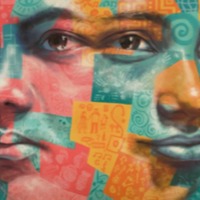
Rita
There are an estimated 145,000 people liing in conditions of modern slavery in Italy (GSI 2018). Italy is a destination, transit, and source country for women, children, and men subjected to sex trafficking and forced labour. Victims originate from Nigeria, Romania, Morocco, China, and other countries. Female victims are often subjected to sex trafficking in Italy after accepting promises of employment as dancers, singers, models, restaurant servers, or caregivers. Romanian and Albanian criminal groups force Eastern European women and girls into commercial sex. Rita was homeless when she was approached by a woman who asked her if she would like to travel and promised to take her to Europe where she could work in her supermarket. Before she left, the woman told Rita the travel costs and made her undergo a voodoo ceremony and swear an oath that she would pay back the money for the journey. As the woman accompanied Rita on the journey from Nigeria through Libya, her attitude began to change. Rita was beaten, abused, and raped by men along the way but the woman did not intervene or protect her. The journey was traumatising, and she saw many people die on the way. Once she arrived in Florence, instead of the supermarket work she was promised, Rita was forced to work as a prostitute in a brothel to pay back the money she owed. After three months of being locked up in the brothel, she escaped and is now in Germany, but she is still being threatened by the Madam in Italy.
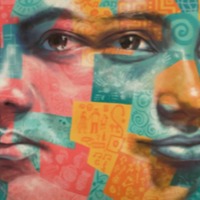
Yasmiin
There is an estimated 48,000 people living in modern slavery in Libya (GSI 2018). Libya is a major transit destination for migrants and refugees hoping to reach Europe by sea. Human trafficking networks have prospered amid lawlessness, created by the warring militias that have been fighting for control of territories since the toppling of Muammar Gaddafi in 2011. Highly organized trafficking and migrants smuggling networks that reach into Libya from Niger, Nigeria, Chad, Eritrea, Ethiopia, Somalia, Sudan, and other sub-Saharan states subject migrants to forced labor and forced prostitution through fraudulent recruitment, confiscation of identity and travel documents, withholding or non-payment of wages, debt bondage, and verbal, physical, and sexual abuse. In some cases, migrants reportedly pay smuggling fees to reach Tripoli, but once they cross the Libyan border they are sometimes abandoned in southern cities or the desert where they are susceptible to severe forms of abuse and human trafficking. Yasmiin had a small restaurant in her home town in Somalia. One day she was kidnapped by some men and raped. After that she became ostracised in her community, people stopped talking to her and stopped coming to her restaurant. She could not stay there any longer and decided to leave Somalia, taking the smuggler route through Yemen and Sudan to Libya, hoping to reach Europe. She was imprisoned in Libya and eventually evacuated by UNHCR to Niger where she is waiting for re-settlement.
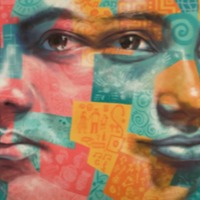
Zoey
There are an estimated 17,000 people living in conditions of slavery in Canada (GSI 2018). Both Canadian and foreign citizens are exploited in forced labour and sex trafficking. Forced labour affects migrant workers under ‘low-skilled’ temporary visa streams including the low-wage and primary agricultural streams. These workers are often in restaurants, hotels, agriculture, food preparation, construction or domestic work. Sexual exploitation of Canadian citizens is the most common form of slavery detected by authorities in the country, with 93% of sex trafficking victims being Canadian. Zoey* talks about her experience of being trafficked for sexual exploitation.
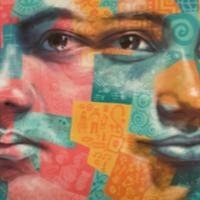
Arunny
There are an estimated 261,000 people living in modern slavery in Cambodia (GSI 2018). All of Cambodia's 25 provinces are sources for human trafficking. Cambodian women and girls move from rural areas to cities and tourist destinations where they are subjected to sex trafficking in brothels, beer gardens, massage parlors and salons. Cambodian men form the largest source of demand for children exploited in prostitution, although men from across the world travel to the country to engage in child sex tourism. Arunny* was trafficked for commercial sexual exploitation at the age of twelve in Cambodia.

Sarah
There are an estimated 403,000 people living in modern slavery in the United States (GSI 2018). Sex trafficking exists throughout the country. Traffickers use violence, threats, lies, debt bondage and other forms of coercion to compel adults and children to engage in commercial sex acts against their will. The situations that sex trafficking victims face vary, many victims become romantically involved with someone who then forces them into prostitution. Others are lured with false promises of a job, and some are forced to sell sex by members of their own families. Victims of sex trafficking include both foreign nationals and US citizens, with women making up the majority of those trafficked for the purposes of commercial sexual exploitation. In 2015, the most reported venues/industries for sex trafficking included commercial-front brothels, hotel/motel-based trafficking, online advertisements with unknown locations, residential brothels, and street-based sex trafficking. Sarah grew up in California. Her cousin was the leader of a gang and its members were often guarding the house. One of the gang members abused Sarah as a child and when her cousin found out, he was forced to retaliate, and Sarah now owed him. After this incident, she became a source of income and was put to work trafficking drugs. One day, her cousin bought her new dresses, took photos of her to sell to older men. When Sarah tried to seek help at school, she was locked up for a week as punishment. Later, when she was seventeen, Sarah’s cousin was arrested and though she was free from his control, she had nowhere to go and she was soon trafficked again by an old friend into adult entertainment. When she was 23, Sarah stole her second trafficker’s car keys and escaped. After living a life of abuse, trafficking, and drug abuse, Sarah struggled to go about ‘normal life.’ She talks about her journey overcoming her trauma and moving forward.
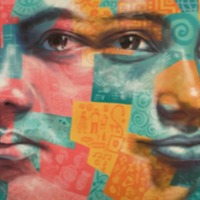
Phalla
There are an estimated 261,000 people living in modern slavery in Cambodia (GSI 2018). All of Cambodia's 25 provinces are sources for human trafficking. Cambodian women and girls move from rural areas to cities and tourist destinations where they are subjected to sex trafficking in brothels, beer gardens, massage parlors and salons. Cambodian men form the largest source of demand for children exploited in prostitution, although men from across the world travel to the country to engage in child sex tourism. Phalla was trafficked for sex at the age of 20, in Cambodia. She was sold to a brothel by her grandmother.
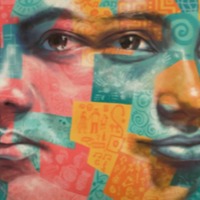
Nadia Murad (Narrative 2)
ISIS has singled out the Yazidi minority, notably its women and children, for particularly brutal treatment. In August 2014, ISIS fighters abducted hundreds, possibly thousands, of Yezidi men, women and children who were fleeing the IS takeover from the Sinjar region, in the north-west of the country. Hundreds of the men were killed and others were forced to convert to Islam under threat of death. Younger women and girls, some as young as 12, were separated from their parents and older relatives and sold, given as gifts or forced to marry ISIS fighters and supporters. Nadia was kidnapped by ISIS. when she was twenty-one years old. She was loaded on to a bus with other young women. Upon arrival in Mosul, the women were beaten, sold and forced to convert to Islam. She details how she feels about the complicity of ISIS women in the exploitation of Yazidis. After being passed from captor to captor, raped on a daily basis, and deprived of basic human comforts like food and companionship, Nadia managed to escape. She jumped over a wall, walked through the night, and knocked on the door of strangers who risked their lives hiding her until it was safe to get her to a refugee camp. From there, Nadia went to Germany.
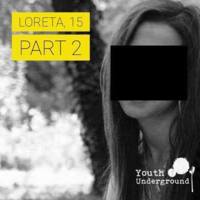
Loreta
There are an estimated 17,000 people living in modern slavery in Lithuania and 145,000 in Italy (GSI 2018). Lithuanian people are trafficked within the country and abroad. Men and boys are exploited in forced criminal activity such as shoplifting, and women and girls in commercial sex. Italy is a destination, transit, and source country for women, children, and men subjected to sex trafficking and forced labour. Victims originate from Nigeria, Romania, Morocco, China, and other countries. Female victims are often subjected to sex trafficking in Italy after accepting promises of employment as dancers, singers, models, restaurant servers, or caregivers. Romanian and Albanian criminal groups force Eastern European women and girls into commercial sex. Loreta experienced physical abuse as a child in a children’s home. She turned to drugs at thirteen years old. The only visitor she had at the home was a man who claimed to be her Godfather. He promised she could live with him when she turned fifteen and could legally leave the home. But he had previously raped her and when she was forced to live with him, her drug abuse increase. Shortly after, Loreta was trafficked into prostitution by a woman claiming to be her sister. When she was seventeen, she was told that pimp wanted to sell her abroad. She was taken to Italy. She was eventually able to escape after seeking help from a Lithuanian man who called the police.
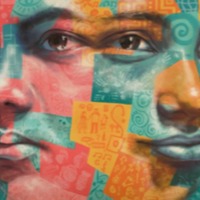
Kolab
There are an estimated 261,000 people living in modern slavery in Cambodia (GSI 2018). All of Cambodia's 25 provinces are sources for human trafficking. Cambodian women and girls move from rural areas to cities and tourist destinations where they are subjected to sex trafficking in brothels, beer gardens, massage parlors and salons. Cambodian men form the largest source of demand for children exploited in prostitution, although men from across the world travel to the country to engage in child sex tourism. When Kolab was seven years old he was told that he had been sold to the people he thought were his parents. At 13, he was sent to Phom Penh where he stayed with two men who offered him a place to live. These men introduced Kolab to another man who forced Kolab into commercial sexual exploitation. He was drugged, raped, and filmed having sex with other men. He was forced to sell drugs and steal and subjected to beatings and torture if he didn’t make enough money.
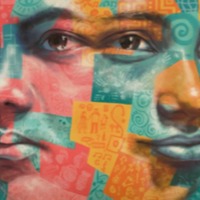
Stephanie
There are an estimated 403,000 people living in modern slavery in the United States (GSI 2018). Sex trafficking exists throughout the country. Traffickers use violence, threats, lies, debt bondage and other forms of coercion to compel adults and children to engage in commercial sex acts against their will. The situations that sex trafficking victims face vary, many victims become romantically involved with someone who then forces them into prostitution. Others are lured with false promises of a job, and some are forced to sell sex by members of their own families. Victims of sex trafficking include both foreign nationals and US citizens, with women making up the majority of those trafficked for the purposes of commercial sexual exploitation. In 2015, the most reported venues/industries for sex trafficking included commercial-front brothels, hotel/motel-based trafficking, online advertisements with unknown locations, residential brothels, and street-based sex trafficking. Stephanie* was trafficked by her friend’s father for commercial sexual exploitation. The men that raped her threatened her if she said anything. Her exploitation led her to addiction and prostitution.
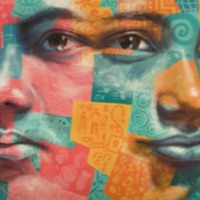
Talia
There are an estimated 403,000 people living in modern slavery in the United States (GSI 2018). Sex trafficking exists throughout the country. Traffickers use violence, threats, lies, debt bondage and other forms of coercion to compel adults and children to engage in commercial sex acts against their will. The situations that sex trafficking victims face vary, many victims become romantically involved with someone who then forces them into prostitution. Others are lured with false promises of a job, and some are forced to sell sex by members of their own families. Victims of sex trafficking include both foreign nationals and US citizens, with women making up the majority of those trafficked for the purposes of commercial sexual exploitation. In 2015, the most reported venues/industries for sex trafficking included commercial-front brothels, hotel/motel-based trafficking, online advertisements with unknown locations, residential brothels, and street-based sex trafficking. Talia* was trafficked for commercial sexual exploitation at the age of twelve in Texas. She was abused in a truck driver prostitution ring by her adopted parents who mentally and physically abused her at home.
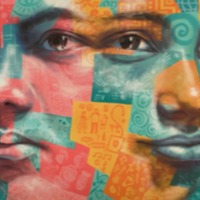
Pamela
There are an estimated 403,000 people living in modern slavery in the United States (GSI 2018). Sex trafficking exists throughout the country. Traffickers use violence, threats, lies, debt bondage and other forms of coercion to compel adults and children to engage in commercial sex acts against their will. The situations that sex trafficking victims face vary, many victims become romantically involved with someone who then forces them into prostitution. Others are lured with false promises of a job, and some are forced to sell sex by members of their own families. Victims of sex trafficking include both foreign nationals and US citizens, with women making up the majority of those trafficked for the purposes of commercial sexual exploitation. In 2015, the most reported venues/industries for sex trafficking included commercial-front brothels, hotel/motel-based trafficking, online advertisements with unknown locations, residential brothels, and street-based sex trafficking. Pamela* was trafficked for sex and child pornography at the age of five by a group of people her family were involved with.
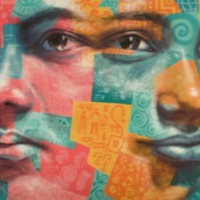
Brian
There are an estimated 403,000 people living in modern slavery in the United States (GSI 2018). Sex trafficking exists throughout the country. Traffickers use violence, threats, lies, debt bondage and other forms of coercion to compel adults and children to engage in commercial sex acts against their will. The situations that sex trafficking victims face vary, many victims become romantically involved with someone who then forces them into prostitution. Others are lured with false promises of a job, and some are forced to sell sex by members of their own families. Victims of sex trafficking include both foreign nationals and US citizens, with women making up the majority of those trafficked for the purposes of commercial sexual exploitation. In 2015, the most reported venues/industries for sex trafficking included commercial-front brothels, hotel/motel-based trafficking, online advertisements with unknown locations, residential brothels, and street-based sex trafficking. Brian* was trafficked by his dad when he was eleven years old. He was taken to an old house for child sexual exploitation. He was locked in a basement and raped, drugged, and beaten by different men.

Jana
There are an estimated 5,000 people living in modern slavery in Slovenia (GSI 2018). Traffickers exploit foreign workers and undocumented migrants vulnerable to labour trafficking in forced begging, domestic servitude, and in construction, transportation, and hospitality. Women and children from Slovenia, Eastern European, Western Balkan, Southeast Asian, and Latin American countries to sex trafficking within Slovenia, and many also transit to Western Europe, primarily Italy and Germany, where they are at risk of sexual and labour exploitation. Ethnic Roma are particularly vulnerable to trafficking in Slovenia. Jana was trafficked at the age of 13 in Slovenia by a friend who had arranged a job interview for her. During the interview she was kidnapped, raped and forced into prostitution.

Rebecca
There are an estimated 403,000 people living in modern slavery in the United States (GSI 2018). Sex trafficking exists throughout the country. Traffickers use violence, threats, lies, debt bondage and other forms of coercion to compel adults and children to engage in commercial sex acts against their will. The situations that sex trafficking victims face vary, many victims become romantically involved with someone who then forces them into prostitution. Others are lured with false promises of a job, and some are forced to sell sex by members of their own families. Victims of sex trafficking include both foreign nationals and US citizens, with women making up the majority of those trafficked for the purposes of commercial sexual exploitation. In 2015, the most reported venues/industries for sex trafficking included commercial-front brothels, hotel/motel-based trafficking, online advertisements with unknown locations, residential brothels, and street-based sex trafficking. Rebecca was trafficked in Indiana, USA when she was twenty-one-years old. After being sexually assaulted at the age of fourteen, Rebecca began acting out and struggled with depression, anxiety, and began experimenting with drugs and alcohol. When she was twenty-one, she met a man almost twice her age and moved in with him just three weeks later. The man introduced her to crystal meth, controlled her movement and sold her to men for sex. Rebecca tells of how, despite leaving her trafficking situation, she struggled to come to terms with her exploitation and it affected her life for years afterwards

Rayanne
There are an estimated 17,000 people living in conditions of slavery in Canada (GSI 2018). Both Canadian and foreign citizens are exploited in forced labour and sex trafficking. Forced labour affects migrant workers under ‘low-skilled’ temporary visa streams including the low-wage and primary agricultural streams. These workers are often in restaurants, hotels, agriculture, food preparation, construction or domestic work. Sexual exploitation of Canadian citizens is the most common form of slavery detected by authorities in the country, with 93% of sex trafficking victims being Canadian. At the age of sixteen, Rayanne was groomed into forced prostitution in Vancouver. She tells fo how she came to terms with what had happened to her.
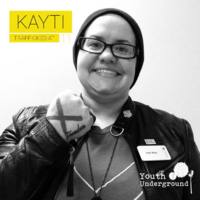
Kayti
There are an estimated 403,000 people living in modern slavery in the United States (GSI 2018). Sex trafficking exists throughout the country. Traffickers use violence, threats, lies, debt bondage and other forms of coercion to compel adults and children to engage in commercial sex acts against their will. The situations that sex trafficking victims face vary, many victims become romantically involved with someone who then forces them into prostitution. Others are lured with false promises of a job, and some are forced to sell sex by members of their own families. Victims of sex trafficking include both foreign nationals and US citizens, with women making up the majority of those trafficked for the purposes of commercial sexual exploitation. In 2015, the most reported venues/industries for sex trafficking included commercial-front brothels, hotel/motel-based trafficking, online advertisements with unknown locations, residential brothels, and street-based sex trafficking. Kayti was trafficked at 11 in the United States. She had experienced sexual abuse at home since the age of two and later, her father took her to a house where she was subjected to child commercial sexual exploitation. Kayti’s exploitation continued until she was twenty-eight years old at which point, she reached out for help.

Jerome
There are an estimated 403,000 people living in modern slavery in the United States (GSI 2018). Sex trafficking exists throughout the country. Traffickers use violence, threats, lies, debt bondage and other forms of coercion to compel adults and children to engage in commercial sex acts against their will. The situations that sex trafficking victims face vary, many victims become romantically involved with someone who then forces them into prostitution. Others are lured with false promises of a job, and some are forced to sell sex by members of their own families. Victims of sex trafficking include both foreign nationals and US citizens, with women making up the majority of those trafficked for the purposes of commercial sexual exploitation. In 2015, the most reported venues/industries for sex trafficking included commercial-front brothels, hotel/motel-based trafficking, online advertisements with unknown locations, residential brothels, and street-based sex trafficking. Jerome was trafficked into child pornography and commercial sexual exploitation by his mother’s boyfriend at the age of five.
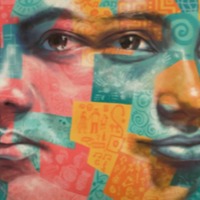
Jasmine
There are an estimated 403,000 people living in modern slavery in the United States (GSI 2018). Sex trafficking exists throughout the country. Traffickers use violence, threats, lies, debt bondage and other forms of coercion to compel adults and children to engage in commercial sex acts against their will. The situations that sex trafficking victims face vary, many victims become romantically involved with someone who then forces them into prostitution. Others are lured with false promises of a job, and some are forced to sell sex by members of their own families. Victims of sex trafficking include both foreign nationals and US citizens, with women making up the majority of those trafficked for the purposes of commercial sexual exploitation. In 2015, the most reported venues/industries for sex trafficking included commercial-front brothels, hotel/motel-based trafficking, online advertisements with unknown locations, residential brothels, and street-based sex trafficking. Jasmine was trafficked at the age of 18 in Connecticut, USA. She grew up in Saugus and Revere, where she started dating a man who coerced her into sex trafficking.
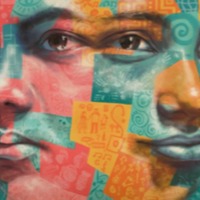
Joanna
From Joanna’s narrative it is unclear in which country Joanna experienced her exploitation. She was trafficked into prostitution abroad at the age of eighteen by the man she loved and the father of her child. After a while, her traffickers left her on the streets and she was picked up by police and taken to prison while they found a translator to communicate with her. When she was taken back home, her family and community had disowned her and she became homeless. She was helped by a woman who took her to a clinic for women who had experienced the same things she had.